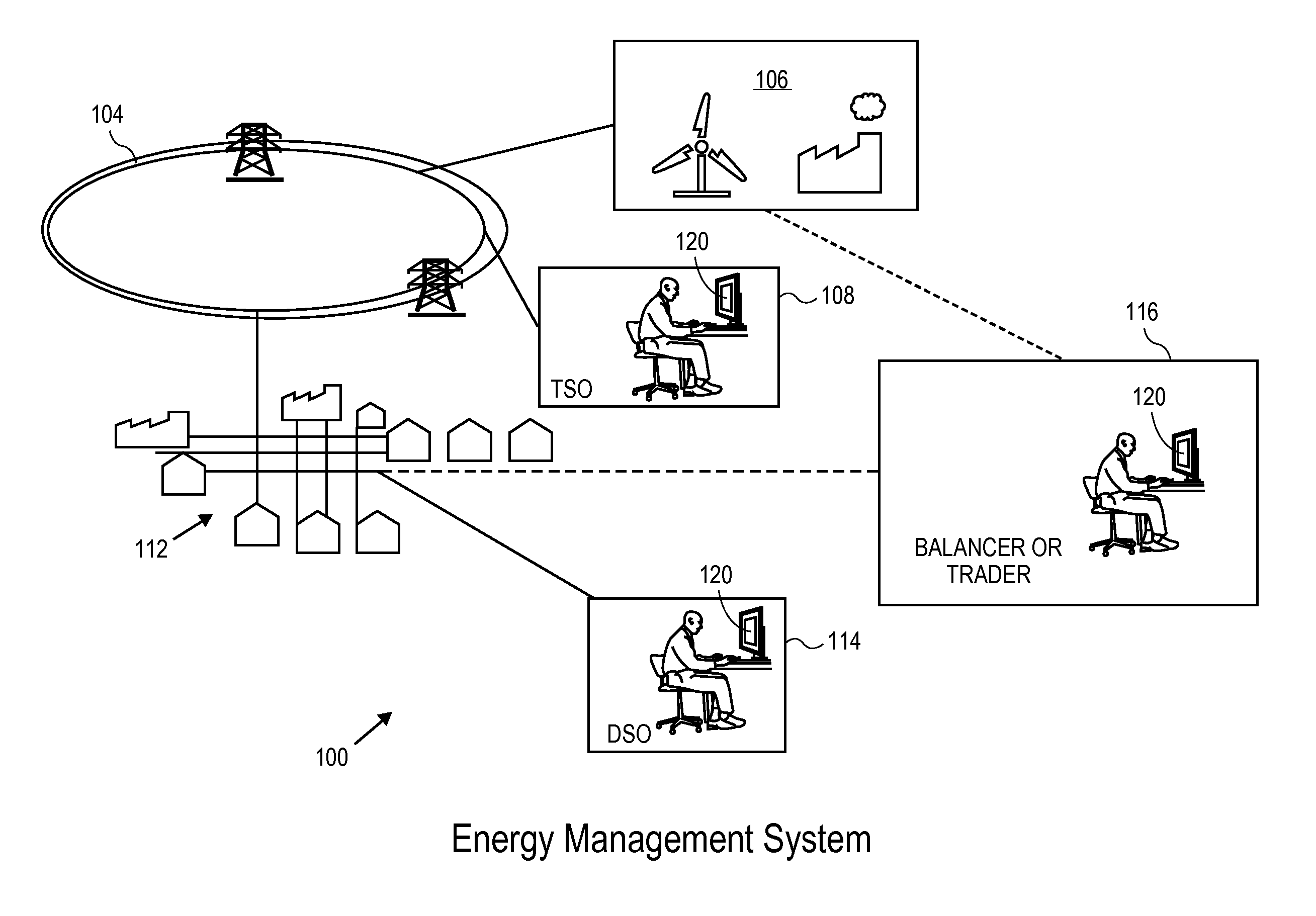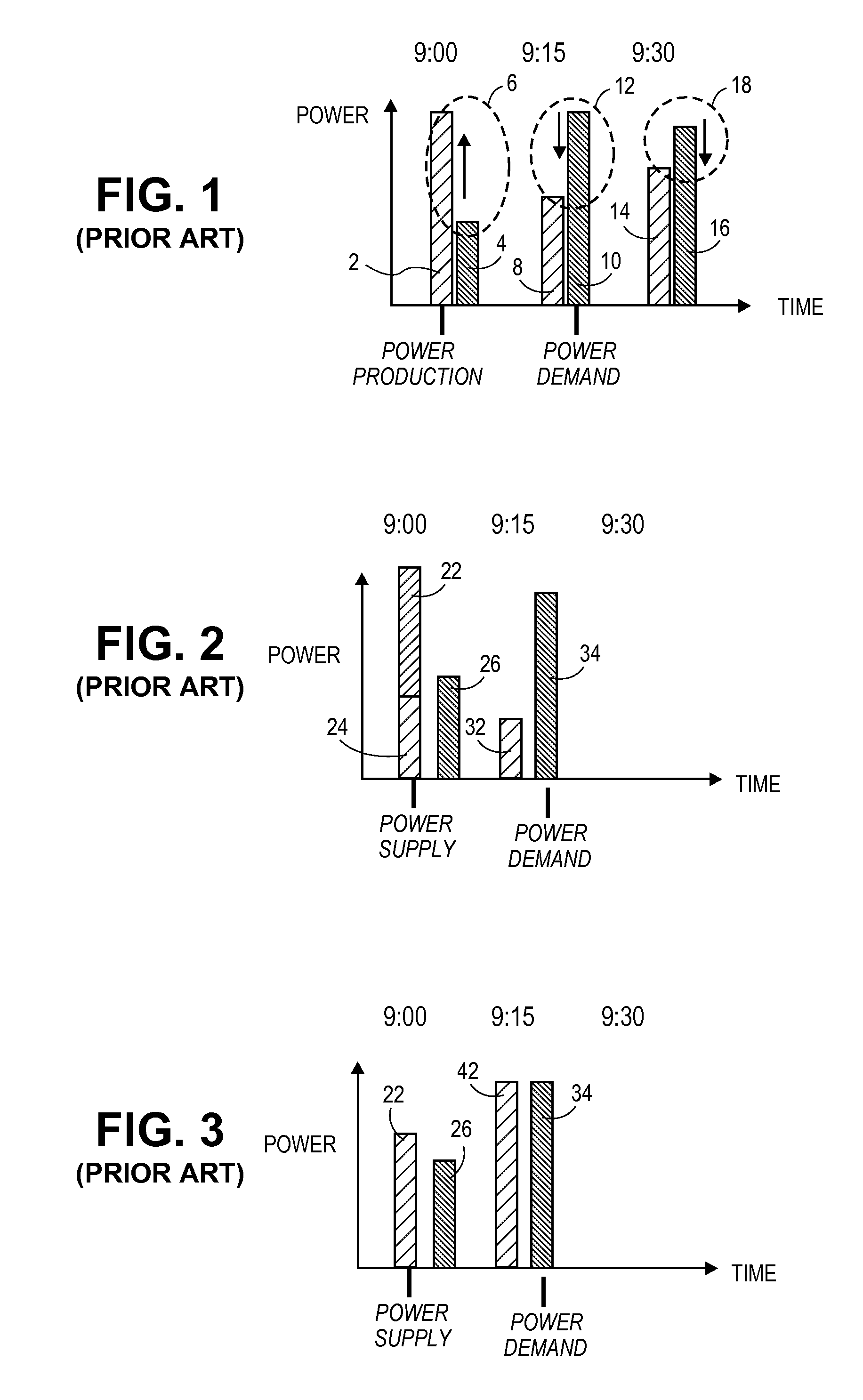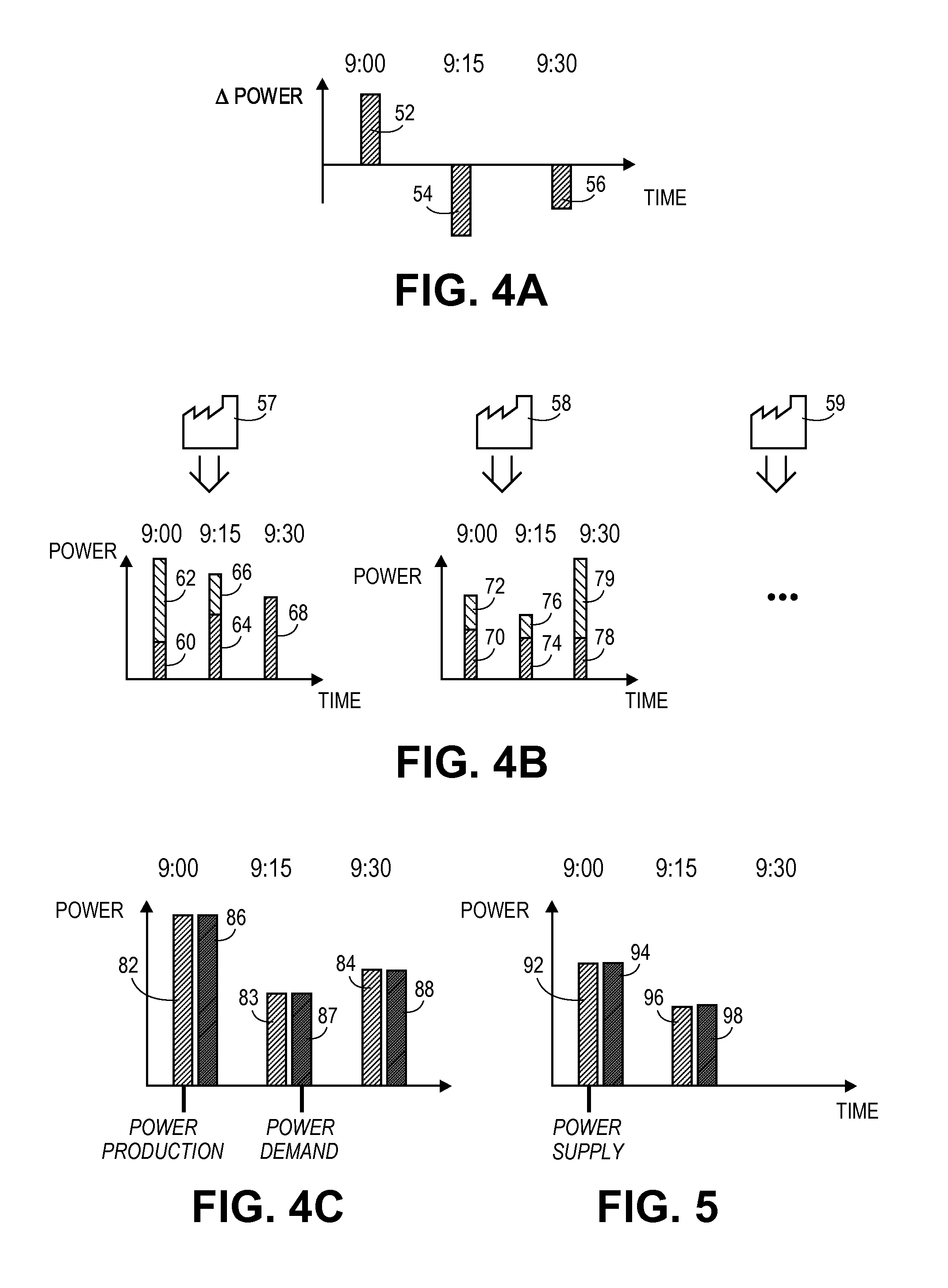Automated demand response energy management system
a demand response and energy management technology, applied in the field of energy management, can solve the problem of low temperature of cold stores, achieve the effects of reducing the risk of over- or underproduction, and optimizing the flexibility of load
- Summary
- Abstract
- Description
- Claims
- Application Information
AI Technical Summary
Benefits of technology
Problems solved by technology
Method used
Image
Examples
Embodiment Construction
[0054]As mentioned above, the present invention is applicable to energy delivered via a distribution network allowing for continuous distribution. This includes energy delivered via electricity, oil, water, or natural gas. As is known, other types of gas include synthetically created gas such as town gas, and other naturally occurring gases such as biogas. As used herein, the terms natural gas and gas include these different types of gas.
Overview and Advantages
[0055]FIGS. 4A-C illustrate how the present invention generally addresses problems with the prior art. FIG. 4A illustrates the scenario of FIG. 1 in which there is an excess of power 52 on the grid at 9 a.m., and shortfalls of power 54 and 56 at 9:15 a.m. and 9:30 a.m. FIG. 4B illustrates how the present invention uses flexible loads to address the problem illustrated in FIG. 4A. Any number of loads 57-59 have been made flexible and have been aggregated into a single virtual load using techniques of the present invention.
[0056...
PUM
 Login to View More
Login to View More Abstract
Description
Claims
Application Information
 Login to View More
Login to View More - R&D
- Intellectual Property
- Life Sciences
- Materials
- Tech Scout
- Unparalleled Data Quality
- Higher Quality Content
- 60% Fewer Hallucinations
Browse by: Latest US Patents, China's latest patents, Technical Efficacy Thesaurus, Application Domain, Technology Topic, Popular Technical Reports.
© 2025 PatSnap. All rights reserved.Legal|Privacy policy|Modern Slavery Act Transparency Statement|Sitemap|About US| Contact US: help@patsnap.com



